NUSTOTO adalah situs resmi yang menawarkan pengalaman bermain slot online terbaik di Indonesia. Dengan antarmuka yang ramah pengguna dan desain yang menarik, NUSTOTO memberikan kemudahan bagi para pemain untuk menjelajahi berbagai jenis permainan slot yang tersedia. Situs ini telah mendapatkan reputasi yang solid di kalangan penggemar judi online berkat layanan pelanggan yang responsif dan sistem keamanan yang canggih, memastikan bahwa setiap transaksi dan data pribadi pemain terlindungi dengan baik.
Salah satu keunggulan NUSTOTO sebagai situs toto slot4d adalah koleksi permainan slot yang beragam, yang mencakup berbagai tema dan fitur menarik. Pemain dapat menikmati permainan dari penyedia perangkat lunak terkemuka, yang menjamin kualitas grafis dan suara yang memukau. Selain itu, NUSTOTO juga menawarkan berbagai bonus dan promosi menarik yang dirancang untuk meningkatkan pengalaman bermain, termasuk bonus selamat datang, putaran gratis, dan program loyalitas yang menguntungkan bagi pemain setia.
NUSTOTO tidak hanya fokus pada permainan, tetapi juga berkomitmen untuk memberikan pengalaman bermain yang aman dan adil. Dengan lisensi resmi dan regulasi yang ketat, pemain dapat merasa tenang saat bermain di situs ini. Tim dukungan pelanggan yang profesional siap membantu pemain dengan pertanyaan atau masalah yang mungkin timbul, memastikan bahwa setiap pemain merasa dihargai dan didukung. Dengan semua fitur ini, NUSTOTO menjadi pilihan utama bagi para penggemar toto slot4d di Indonesia.

.png?updatedAt=1736750588302)
.jpg?updatedAt=1734446472292)











 Promosi
Promosi
 Login
Login
 Daftar
Daftar
 Link
Link
 Live Chat
Live Chat